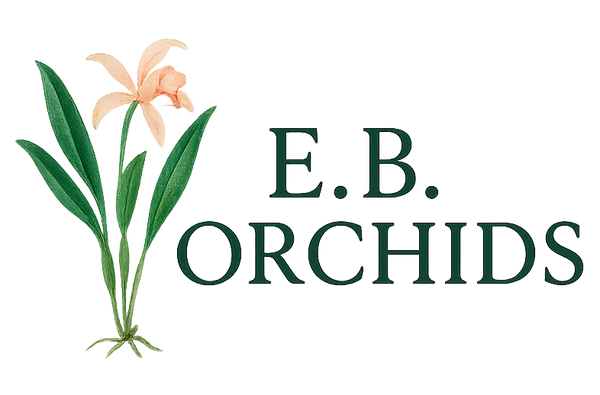Bulb-oh-fill-um
-
Light
Bublophyllum are best grown in shaded light (1000-1500 foot-candles). There should be enough shade that if you pass your hand over the top of the leaves, a shadow will not be produced. In the home, bulbophyllum can be grown in an East or North-facing window where they will receive diffuse light. If growing in a South window, use a sheer curtain.
-
Temperature
Bulbophyllum will thrive in warm to hot environments, typically ranging between 70F and 85F during the day with a drop to to 60-65F at night. The drop in temps at night helps to initiate flowering. Bulbophyllum should not be exposed to temperatures below 60F for prolonged periods as exposure can lead to fungal and bacterial infections and damage to the plant.
-
Water
Bulbophyllum should never dry completely - they love having 'wet feet'. Water when the media is just approaching dryness but still has some moisture. Using rainwater is best! Mounted plants should be watered daily, and sometimes multiple times per day depending on the temperature and airflow
Never use ice to water orchids!
-
Humidity
Bulbophyllum will thrive in high humidity - keep relative humidity above 50%. In the home, a humidifier can be placed nearby to raise local humidity levels.
With increased humidity, increase airflow to prevent fungal and bacterial infections!
-
Fertilizing
Bulbophyllum will benefit from a balanced fertilizer (10-10-10) applied at 1/4 to 1/2 the strength listed on the container up to once per week. Bulbophyllum are not heavy feeders and will do better with under-fertilizing than over-fertilizing (so if you forget a few weeks, don't sweat!).
-
Repotting
It's best to pot bulbophyllum in a fine bark mix or even better, in sphagnum moss. These plants will do best with a media that holds onto moisture but still has good draining. Bulbophyllum roots do not typically grow very long, so using a shallow pot (such as a small bulb pan) will be best.
Mounted plants should be mounted with plenty of moss to help retain moisture at the roots.
When cutting any parts of the plant during a repot, use sterilized cutting tools and potting instruments to prevent any spread of disease. We recommend spraying pruners with rubbing alcohol or using a flame/torch on the blade.

